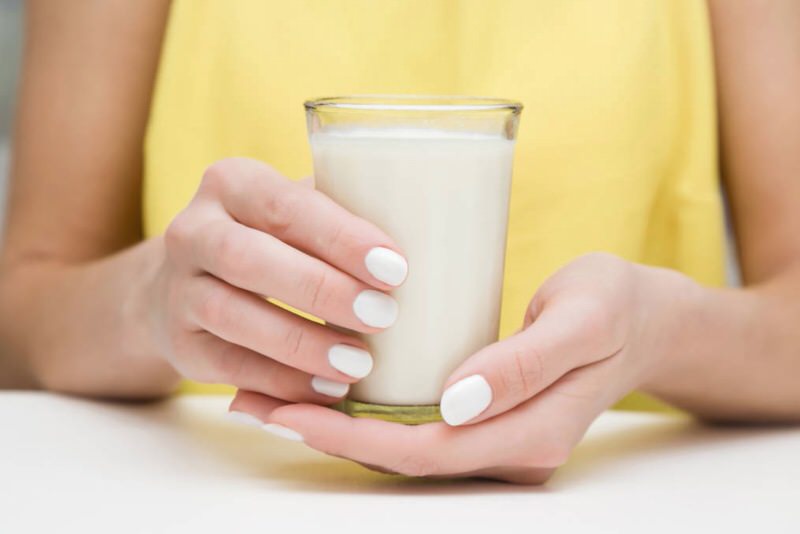If you like dairy and milk, and you are concerned about what you drink or eat, you have probably wondered which milk is better. We will discover the most suitable for you.

While whole milk is conceived as a more complete and nutritious dairy (but which can also be seen as a drink rich in fat, and therefore reviled), semi-skimmed milk as an intermediate option with less fat content and just as complete, and skimmed milk as an option for diets (but in reality it would be “pure water with some milk”), it is likely that at many times you have had doubts about which option to choose, and which would ultimately be the most appropriate for you. Include in your breakfasts, snacks or dinners.
But before discovering which option would be more appropriate – or recommended – from a solely nutritional point of view, it is necessary to investigate a little more about what their main differences are. Especially so that, at least, you take it into account when you go back to the supermarket and are faced with the eternal question of what variety of dairy to choose.
Of course, we are starting at this time from the basis of a very interesting intervention that the nutritionist made in 2015, in which he stated that “ cow’s milk does not It is essential, but it is not a poison either.
What are the differences between the different types of milk? Whole, semi-skimmed and skimmed.
Whole milk:
It is a type of milk that is much more consumed and popular than other varieties, although in recent years it has been more reviled for its higher fat content (especially saturated fat).
Basically it is fresh milk which has been subjected to an ultra-pasteurization process (UHT). This process consists of exposing fresh milk for 2 to 4 seconds at a temperature that ranges from 135 to 140 ºC. Then it is rapidly cooled, to temperatures that do not exceed 32 ºC.
From a nutritional point of view it tends to preserve all the nutritional properties that we find in fresh milk, such as proteins of high biological value, carbohydrates in the form of lactose, calcium, iodine, phosphorus, vitamin A, B12 and rivoflavin … although it has a high amount of saturated fat. Specifically, 100 milliliters provide about 3.9 grams of fat.
Semi-skimmed milk:
It consists of whole milk, which is not only subjected to the ultra-pasteurization process, but also undergoes a process by which part of its fat content is removed, although it maintains different amounts of fatty acids, fat-soluble vitamins and other compounds that found in milk fat.
100 milliliters of semi-skimmed milk provide about 1.7 grams of fat.
Skimmed milk:
It is whole milk that has undergone a process of almost complete elimination of fat content. From a nutritional point of view, it provides carbohydrates, proteins, vitamins and minerals, although fat-soluble vitamins are lost from the moment in which the fat is removed from its composition (although they are later added again, being enriched).
100 milliliters of skim milk provide about 0.1 grams of fat.
Which to choose? What milk would be healthier?
Once we take into account what are the main differences between the different types of milk that exist and that we can currently find in the supermarket, it is time to ask ourselves which option would be the most appropriate. Although, on this occasion and as it happens in other circumstances, everything will depend on the moment or stage of life in which we find ourselves.
Whole milk would only be recommended during the growth and development stages, since its caloric intake – and fat content – is much higher, and during this stage it fulfills precisely this function. In addition, it is not suitable in the case of following weight loss diets, in people who are obese and overweight, or if they suffer from some type of cardiovascular disease.
However, just from the moment in which the growth and development process stops (which happens between 18 to 20 years of age), it is time to switch to semi-skimmed or skimmed milk, although with nuances.
For example, semi-skimmed milk would be recommended in children with a tendency to be overweight and obese, provided that the pediatrician or child nutritionist advises the substitution of whole milk for it.
In fact, many nutritionists advise opting for semi-creamed milk, but as long as you’re daily consumption is not high, since cow’s milk is especially rich in saturated fatty acids, and your daily intake should be below 10% of the intake. Daily fat.
While, skimmed milk, due to its low calorie content and almost zero fat content, would be more advisable in people who follow a weight loss diet or who suffer from some type of cardiovascular problem.
The nutritional contribution in proteins, minerals and vitamins is practically identical in the three varieties of milk analyzed, so only their fat content varies and therefore in calories. As you will see below:
| Composition per 100 ml | Whole milk | Semi-skimmed milk | Skimmed milk |
| Energetic value | 264 kJ / 63 Kcal | 190 kJ / 45 Kcal | 142 kJ / 33 Kcal |
| Fats | 3.6 g | 1.6 g | 0.2 g |
| – of which saturates | 2.5 g | 1.1 g | 0.1 g |
| Carbohydrates | 4.7 g | 4.7 g | 4.8 g |
| – of which sugars | 4.7 g | 4.7 g | 4.8 g |
| Protein | 3.0 g | 3.0 g | 3.1 g |
| Calcium | 110 mg | 110 mg | 110 mg |































